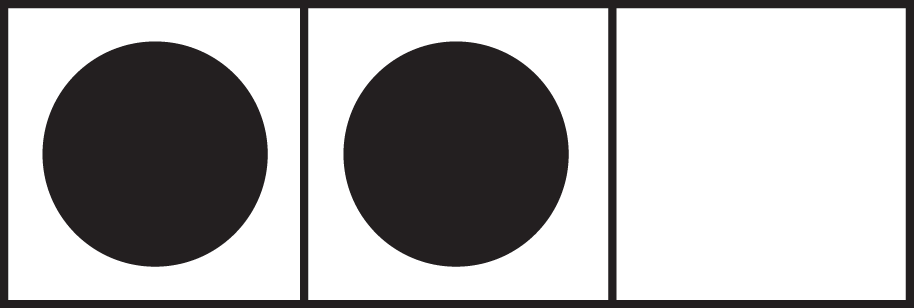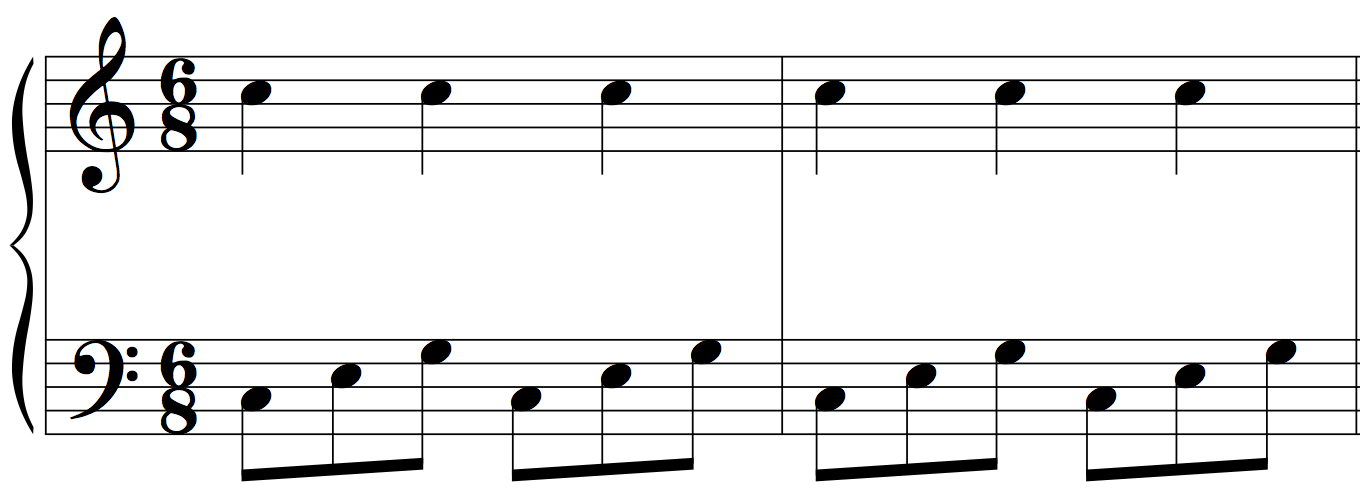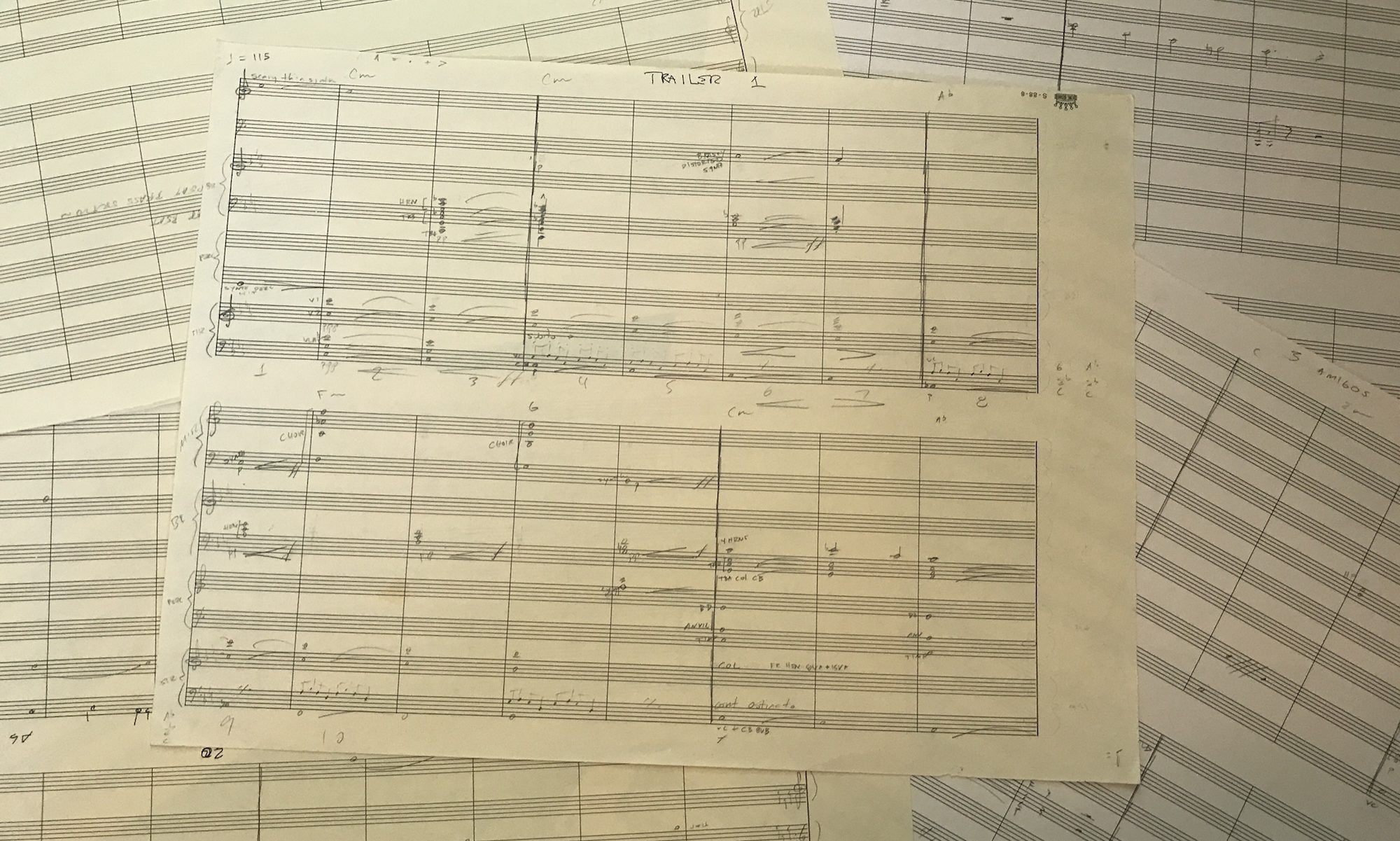Typically, a piece of music is organized into measures, the length of which is determined by the meter. While a certain meter may specify that the music should be in a time signature such as 4/4, in reality this is just a suggestion. That is, the composer may choose rhythms which go against the meter of the piece. When you use a rhythmic grouping that contrasts with the chosen meter, this is called cycling.
In the following example, you will see a rhythmic pattern that repeats every 3 beats, even though the time signature is 4/4.

Here is another example where there is a rhythmic pattern based on three beats existing in measures that contain 4 beats:


* Now complete the exercises entitled Cycling 1 and Cycling 2.
This technique can also work with faster rhythm such as 8ths, 16ths, or even 32nd notes. Typically, it is most effective when there is a note (not a rest) at the start of the pattern so the ear has a way to orient itself.
If there is no rest, it can also work if there is an accent to denote the different segments in the pattern. Here is a 3 3 2 cycling rhythm using 8th notes with accents:

Because cycling causes the rhythm to become out of sync, it is necessary after a while to have some makeup notes that fill up the remaining beats in the measure and get it back on the downbeat. For example, in the pattern above the cycling pattern is based on groups of three. After playing twice, we see two notes to finish up the bar. This gives a total note count of eight, enough to fill up the measure. Thus, if the pattern continues again in the next measure, it will again be aligned with the downbeat:
 A contour with the appropriate number of notes can also create a cycling pattern. This is common on new age and popular music:
A contour with the appropriate number of notes can also create a cycling pattern. This is common on new age and popular music:

When the time signature is 4/4, 3/4, or any time signature where the beat length is a quarter note, the typical formula for creating a cycling pattern is this:
- Choose a speed, either quarters, eighths, or sixteenths.
- Choose a rhythmic pattern with a total length of three units.
- Repeat the rhythm at the given speed until you are nearing a barline, usually two or four times.
- Add the appropriate number of makeup notes to finish the bar.
There are many different types of cycling patterns. Given 4/4 or some other even time signature, here are some of the common groupings:
3 3 2
3 3 3 3 4
6 6 4
In meters where the beat length is a dotted quarter, such as 6/8, 9/8 or 12/8, the formula is only slightly different. The rhythmic motive should be one, two or four units long (namely powers of two). In the example below the meter is 6/8, meaning each beat contains three 8th notes. The cycling pattern uses quarter notes, which are equivalent to two eighth notes.

In 3/4, like 4/4, the cycling pattern is based on groups of three. Here we have a 3/4 meter with a cycling melody using dotted quarters, which are equivalent to three eighth notes:

- Please complete the exercises entitled Cycling 3 and Cycling 4.
